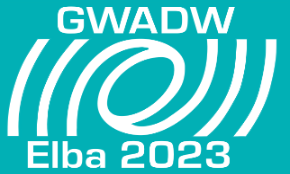Speaker
Description
Coating thermal noise is one of the dominant noise sources in current gravitational wave detectors and ultimately limits their sensitivity to signals from weaker or more distant astronomical sources.
Here we present investigations into the promising candidate high-n coating material for future detectors: TiO2:GeO2. Specifically a mixture of 44% TiO2 / 56% GeO2, as well as pure SiO2 coatings, deposited via IBS at Colorado State University have been investigated, as both single layers and together in two HR stack configurations.
We measured the Q factors of uncoated and coated disks to infer the Q of the coatings themselves. This was carried out through several stages of heat treatment. Furthermore, we implement an effective medium model to estimate the Q of the HR stacks from our single layer measurements alone, and then compare these predictions with Q's measured from the real HR stacks. From this, we can observe any discrepancies between measurements and predictions, and infer the nature of any measured excess losses, and their evolution with heat treatment.

